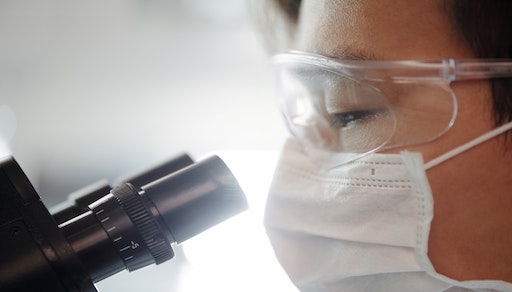Scientific research has come a long way since its inception, and much of the progress made can be attributed to the use of advanced technological tools such as microscopes. These instruments allow us to see the world in a way our naked eye cannot, enabling us to study and understand the complex structures and functions of microscopic organisms and cells. Whether a science student, or simply curious, in this blog post, we will delve into the topic of compound microscopes, answering the question of “What is a compound microscope?” and “What are the parts of the microscope?”. We will discuss the essential parts of a compound microscope, explaining their functions and how they work together to provide magnified images of microscopic specimens. Furthermore, we will explore the various types of compound microscopes, highlighting their unique features and benefits.
What is a Compound Microscope?
A compound microscope has two lenses: an objective and an eyepiece lens. The objective lens initially magnifies a specimen and produces an inverted image; the eyepiece lens will further elaborate the image and make it upright. A light source illuminates the sample from below, and a series of knobs and adjustments allow for the fine-tuning of focus and magnification. Biology, medicine, and materials science all use compound microscopes.
The Objective Lens
The most critical compound microscope part is the objective lens. It is located near the stage and magnifies the specimen. Compound microscopes often have multiple objective lenses with varying magnification, allowing users to choose the best lens for their needs. The objective lens can be adjusted by turning a nosepiece with multiple lenses. Higher magnification lenses tend to be shorter and have a higher numerical aperture.
The Eyepiece Lens
The eyepiece lens is located at the microscope’s top and further magnifies the specimen. The already stretched model can be further elaborated by the eyepiece lens (located at the top of the microscope). The eyepiece lens is typically removable and comes in varying magnifications. Most eyepieces have a magnification of 10x.
The Light Source
Microscopy requires illumination. A built-in light source is under the compound microscope’s stage or base. The light shines up through the object, making it easier to view. The light source is often an LED bulb, but other types of lighting are also available. Most compound microscopes have a built-in intensity control for the light source, allowing the user to adjust the image’s brightness.
The Stage
Objects are placed for viewing on the stage. The stage has a hole in the centre to allow light from the light source to pass through the object. A user can view different parts of the model by moving the stage.
The Course and Fine Adjustment Knobs
The course adjustment knob focuses on the specimen roughly, quickly moving the objective lens in the vertical direction. However, to get the most accurate possible picture, the fine adjustment knob allows for the slow motion of the objective lens and is used to adjust focus appropriately.
The Condenser
The condenser collects and concentrates light onto the specimen. By adjusting a knob, users can vertically adjust the condenser. It is located under the stage. If the condenser is too high, it will not focus the light on the object, resulting in a dim image. If the condenser is too low, the light will concentrate too sharply, blurting the vision.
The Diaphragm
The diaphragm controls the amount of light that passes through the specimen. It is a rotating disk under the stage with varying aperture sizes. The diaphragm is a rotating disk with varying aperture sizes. This feature is used to adjust the contrast of the image. The contrast of the image can be altered due to this feature.
The compound microscope has become a vital instrument in many scientific fields. Its simplicity and versatility make it an indispensable tool for viewing and studying specimens. By knowing how each microscope part performs, you will understand how to achieve the best possible image resolution, magnification levels, and clarity, resulting in more accurate results and discoveries. If you are looking for a compound microscope(also referred to as a light microscope), take a look at one of our light microscopes (compound microscopes) or contact Techmate today so we can help assist you with your choice.

